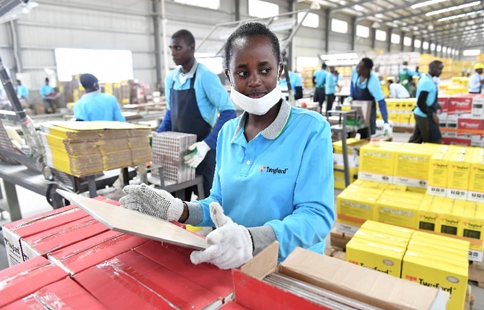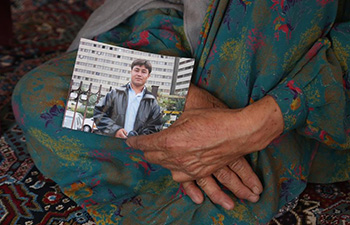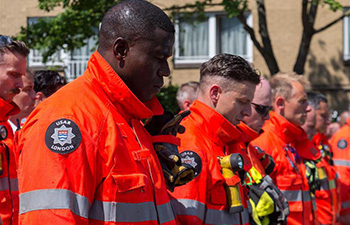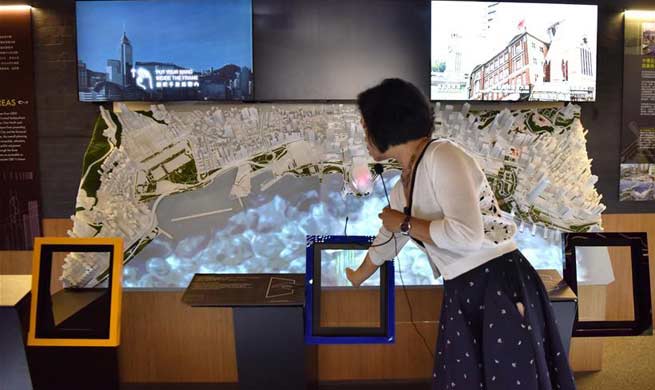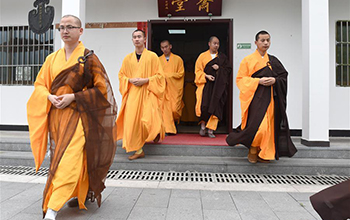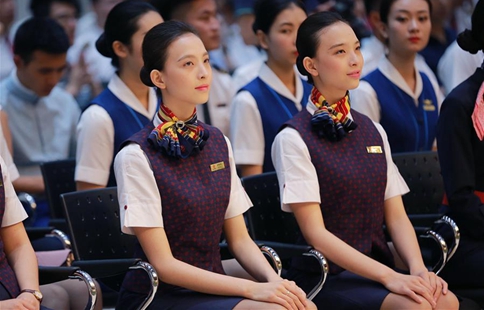SAN FRANCISCO, June 18 (Xinhua) -- U.S. researchers are growing tiny functioning segments of organs, called organoids, in a bid to find ways to treat deformities of the craniofacial complex, namely the skull and face.
TISSUE REGENERATION USED TO IMPROVE TREATMENT OF CRANIOFACIAL DEFORMITIES
Researchers at the University of California, San Francisco (UCSF), are using stem cells from patients with such deformities to figure out when and how such flaws occur in fetal development.
Organs of the craniofacial complex often go terribly wrong during fetal development. Deformities of these bones or soft tissues, the most common of birth defects, can cut life short by blocking the airway or circulation, or disfigure a face.
In addition, such deformities may lead to a lifetime of corrective surgeries and social isolation.
As director of the UCSF Program in Craniofacial Biology and chair of the Division of Craniofacial Anomalies, Ophir Klein has orchestrated a research endeavor to translate basic science findings in tissue regeneration into improved treatments for kids with craniofacial deformities.
While Klein is growing teeth, his colleagues are growing tissues that make up the face, or muscle, or salivary glands.
Klein's work to generate teeth is inspired by his patients with ectodermal dysplasia, a congenital disorder characterized by a lack of sweat glands, hair, or teeth. Being able to generate the roots of teeth would be remarkable for these patients.
A tooth can be regenerated in parts. Stem cells can be used to grow the roots. To grow an entire organ, Klein's colleagues are planning to partner with bioengineers who can produce a biocompatible material that could serve as a framing device to create dentin, one of the hard components of a tooth.
If they start with the right cells, then the scaffolding will help them create the right design.
As the reservoirs of human development, stem cells take it upon themselves to tirelessly renew and differentiate the myriad cell types required to build a body from an embryo.
"It is a self-organizing process," said Zev Gartner, an associate professor of pharmaceutical chemistry, explaining that the process starts in the womb with embryonic stem cells (ESCs) or, in the case of organoids, induced pluripotent stem cells (iPSCs).
These cells are mature cells that are stripped back to their earliest stage of development using a process devised by UCSF Professor of Anatomy Shinya Yamanaka, who won a Nobel Prize for discovering the process.
A SERIES OF SOLUTIONS INVOLVED IN MAKING ORGANOIDS
To make organoids, iPSCs are put through a series of solutions, then added to a gel that mimics the squishy 3D cellular matrix of the embryo. The gel provides the right conditions for them to get to work.
Gartner noted that people who work with stem cells tend to focus on either regenerative medicine or disease modeling. Those interested in disease make models of tissues so that they can understand how diseases work, while those interested in regenerative medicine try to make models of healthy tissue that could be transplanted.
Gartner straddles both camps, according to a news release from UCSF. He grows breast organoids.
"The mammary gland is great because we can simultaneously think about these two phenomena as two sides of the same coin," he said. "One is regenerative medicine through self-organization, and the other is understanding the progression of breast cancer through a breakdown in self-organization."
Jason Pomerantz, a plastic surgeon, falls into the regeneration camp, as he works to incubate small human muscles in animals for use in his patients' faces.
In a recent project, he inserted stem cells from human muscles into a mouse whose own muscle stem cells had been incapacitated. He then perturbed the muscle to stimulate regeneration.
As the muscle healed, the cells created new muscle tissue, which the mouse's nerves innervated to make a functioning muscle. It's exactly the size of the muscles he needs for full articulation of expression and function in a human face or hand.
For Edward Hsiao, an assistant professor, the goal is to engineer bone with the help of a 3D printer built with bioprinting technology, for patients with fibrodysplasia ossificans progressiva.
For these patients, bone grows like a runaway train, and the slightest bump or injury can set off a spurt of bone growth that can fuse their vertebrae, lock their joints, or even freeze up their rib cages, leaving them unable to breathe.
From iPSCs, Hsiao can make many of the essential ingredients of bone, including mesenchymal stem cells, endothelial cells, and macrophages.
"We are putting cells into the equivalent of an ink. Then we will print the structures with the ink, let the ink dissolve, and leave the cells," explained Hsiao. "The hope is that the cells can then recapitulate the normal developmental process."
If the approach is successful, he hopes to use the resulting models to test drugs and other treatments to halt or prevent bone deformities. Down the line, his progress also stands to transform bone and joint replacements.
The effort at UCSF is one of the most viable payoffs to date from stem cell science, the researchers claimed. With these organoids, physicians and scientists can not only trace the paths of normal and abnormal development, but also test drugs and other treatments for their effectiveness in humans.




